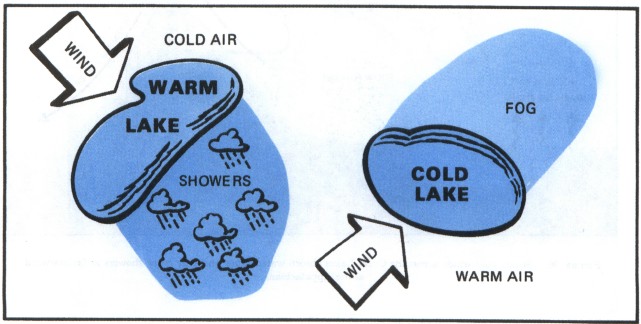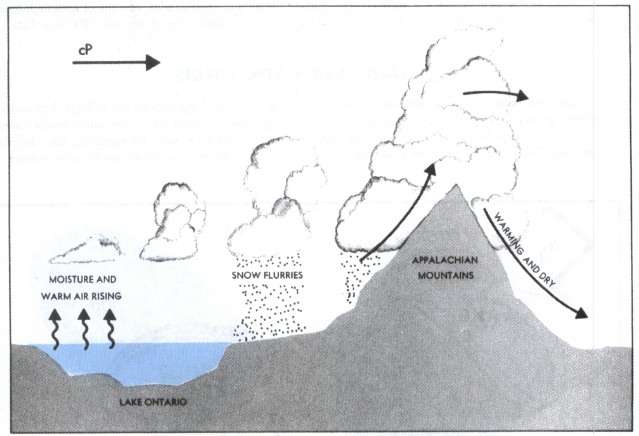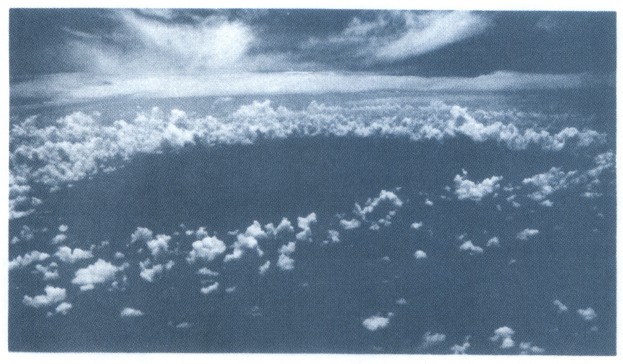Aviation Weather
full text of the classic FAA guide
LAND AND WATER EFFECTS
Land and water surfaces underlying the atmosphere greatly affect cloud and precipitation development. Large bodies of water such as oceans and large lakes add water vapor to the air. Expect the greatest frequency of low ceilings, fog, and precipitation in areas where prevailing winds have an over-water trajectory. Be especially alert for these hazards when moist winds are blowing upslope.
In winter, cold air frequently moves over relatively warm lakes. The warm water adds heat and water vapor to the air causing showers to the lee of the lakes. In other seasons, the air may be warmer than the lakes. When this occurs, the air may become saturated by evaporation from the water while also becoming cooler in the low levels by contact with the cool water. Fog often becomes extensive and dense to the lee of a lake. Figure 37 illustrates movement of air over both warm and cold lakes. Strong cold winds across the Great Lakes often carry precipitation to the Appalachians as shown in figure 38.
A lake only a few miles across can influence convection and cause a diurnal fluctuation in cloudiness. During the day, cool air over the lake blows toward the land, and convective clouds form over the land as shown in figure 39, a photograph of Lake Okeechobee in Florida. At night, the pattern reverses; clouds tend to form over the lake as cool air from the land flows over the lake creating convective clouds over the water.



Table of Contents
Previous Section: Precipitation
Next Section: In Closing
A PDF version of this book is available here. You may be able to buy a printed copy of the book from amazon.com.
